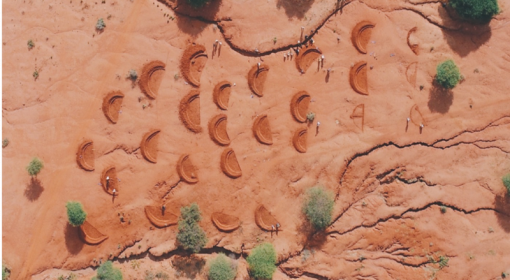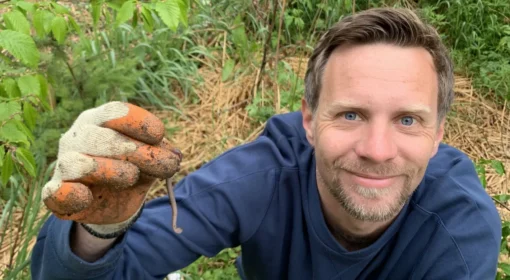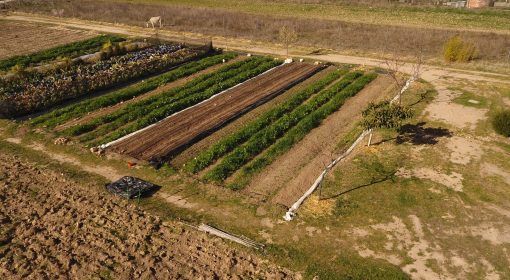By Shubham Jain (MetaMeta), Laxmi Sharma (FES), Jyoti Mishra (RAIN)
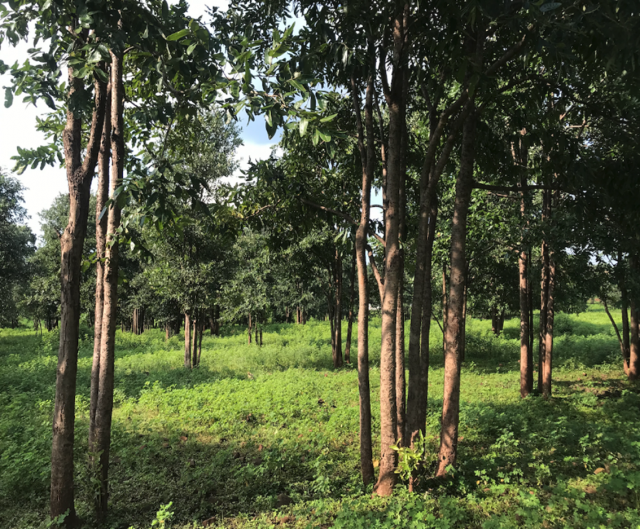
Social and ecological systems are interconnected. Private resources and livelihoods are dependent on common resources as natural resources (i.e. land, water, plants, and animals) provide functions and services. Commons perform various functions like regulating nutrient and water cycles, reducing soil erosion, maintaining soil organic carbon, stabilizing soil moisture, flood control, local climate regulation, and over improvement of production systems. This shows the dependency of each natural resource on the other. To have livelihood security we need the food, fodder, water, social, and economic security which comes from having ecological security. 250 privately held hectares of land need service from 750 hectares of common land for its sustainability.
Forests on common lands serve many purposes. In addition to providing livelihoods, the forest resource can contribute to household income during lean seasons:
- Goods: Fertilizer, Firewood, Fodder, Food, flower, fence, Fibre (7Fs), seed, medicine, honey, leaves, etc.
- Services: Pollination, pest management
- Functions: Regulating water cycle, Climate change mitigation, habitat, cultural significance, carbon sequestration.
The natural regeneration process of commons is threatened by cutting trees, fire, unsustainable harvesting mechanisms, unregulated grazing, encroachment, mining, etc. Here society and social processes play an important role: without active support from the community, ecological restoration is difficult.
Livestock plays an important role in regenerative agriculture and is also considered an essential part of the circular economy. The manure from livestock constitutes a very important component of both agriculture and forest economy. In pastoralist society, animals spend their day time in the forest. They graze and do dungs, dropping and urine in the forest area, which acts as manure for commons. During the rainy season, this manure comes with the river/drainage line of the agricultural lands. Flowing manure with rain brings a lot of nutrients and carbon organic matter which improves the soil health and thus fertility of the soil. The fertile soil provides higher productivity, yield and income for the farmers.
To find the impact of commons on soil fertility, a study was done to develop insight and orient around the geo-spatial findings on the impact of commons (forest) on soil health on a landscape. A measure to understand the soil health trends is showing the Soil Organic Carbon levels using the Soil Health Cards which are tagged to the exact field on a geospatial map and can be viewed. It shows precisely where the soil sample was taken. The findings suggest that the locations nearer to the commons or forest (Angul, Odisha) have more organic carbon than the farms away from the commons. With regenerative agriculture as a core focus, it was an attempt to enhance our understanding by focusing on soil organic carbon as the most critical indicator.
Apart from understanding impact of the commons on different natural resources it is also important to understand the perspective of the community regarding the different resources and one of the useful tool is CBSD (Community Based System Dynamics), which draws on a mix of methods such as Participatory Rural Appraisal and Group Model Building, offering scope for a visual representation of mental models of the community in the form of informal causal maps to better understand the different interconnections in the system. It helps the practitioner to understand various mental models that the community carries around resources and their management. It is an effective way of understanding the village-level dynamics and how one can engage with the community while working on ecological/natural resources.
It is also important how communities succeed or fail at managing common pool (finite) resources such as grazing land, forests and irrigation waters. Ostrom principles stresses on the existing eight principles formulated by Ellinor Ostrom for governing and working on commons and it effectively answers popular theories about the “Tragedy of the Commons”, which has been interpreted to mean that private property is the only means of protecting finite resources from ruin or depletion. She has documented in many places around the world how communities devise ways to govern the commons to assure its survival for their needs and future generations[1].
The first step when we are working on securing the common property’s status is to define clear group boundaries, which is also one of the Ostrom principles, with use of the (CLM)Common Land Mapping app . This GIS-enabled tool does not just provide an overview of all the commons in a village but the GIS tagging can help monitor the common land remotely through satellite. The tool also helps in understanding and processing the land status and its uses. This helps regarding mapping out areas, creation of boundaries, area calculation, etc.
The main objective of the Social and ecological system approach to agriculture is to understand the different steps for working on commons, processes associated with it and the different informative tools to complement the process. This also helps to develop insight into working on commons, starting with identifying, claiming, securing, governing, restoring and monitoring. The figure below shows the interconnectedness of different aspects of Commons.
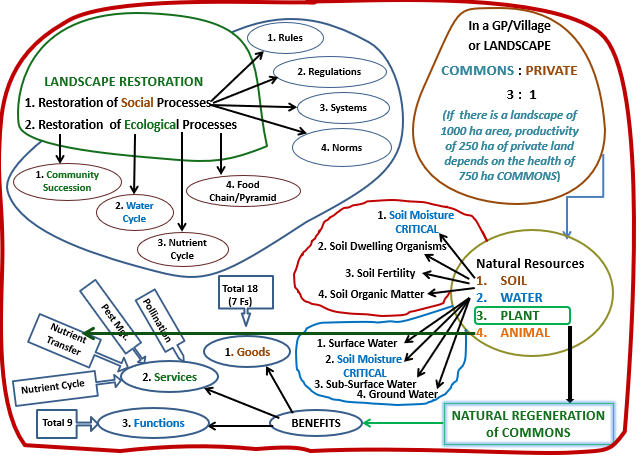
References
[1] https://www.onthecommons.org/magazine/elinor-ostroms-8-principles-managing-commmons

